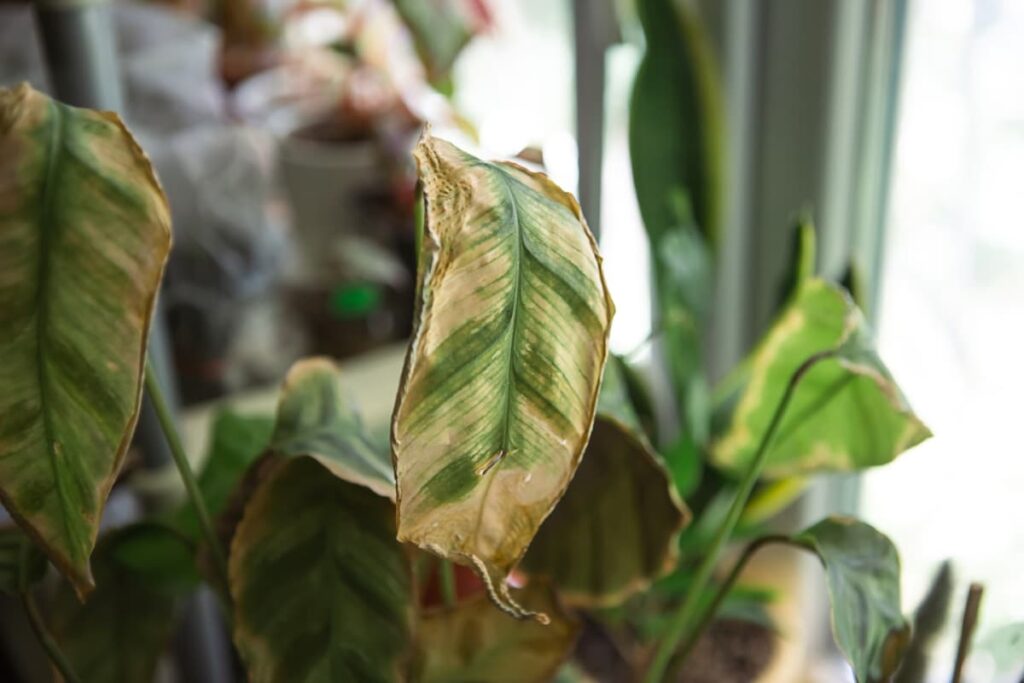Discover effective and eco-friendly solutions with our guide on the Top 10 Homemade Sprays for Fusarium Wilt. From DIY treatments to natural remedies, explore organic control methods to safeguard your garden. This comprehensive list provides easy-to-follow recipes for homemade sprays, ensuring effective Fusarium wilt management.

About Fusarium Wilt and Damage Symptoms
Fusarium wilt is a common plant disease caused by the fungus Fusarium oxysporum. It affects hundreds of plant species, including many important crops such as sweet potatoes, tomatoes, legumes, melons, and bananas. Fusarium wilt blocks the water-carrying vessels of the plant, causing wilting, yellowing, browning, and death of the leaves, stems, and roots.
Fusarium wilt can continue to survive in the soil for a long time and infect plants through wounds or roots. It is more severe in warm and moist conditions. There are no effective chemical treatments for Fusarium wilt, but there are some homemade sprays that can help prevent or reduce the infection. These sprays are made from natural ingredients that have antifungal or antibacterial properties. They can also boost the plant’s immunity and health. Here are ten easy DIY solutions for Fusarium wilt
Top 10 Homemade Sprays for Fusarium Wilt
Hydrogen Peroxide Spray
Hydrogen peroxide powerful oxidizer that can kill fungal spores and bacteria. It also provides oxygen to the roots and improves soil aeration. To make this spray, mix one tablespoon of 3% hydrogen peroxide with one liter of water. Spraying the solution on the leaves and soil once a week.
Potassium Bicarbonate Solution
Potassium bicarbonate is a salt that can raise the pH of the soil and make it less favorable for fungal growth. It also inhibits spore germination and disrupts fungal cell walls. To make this solution:
- Dissolve one teaspoon of potassium bicarbonate in one liter of water.
- Add a 2-5ml of vegetable oil or soap to help it stick to the leaves.
- Spraying the solution on the leaves and soil every two weeks.
Mustard Seed Extract
Mustard seeds contain glucosinolates, which are compounds that have antifungal and antibacterial effects. They also stimulate the plant’s defense mechanisms and increase resistance to diseases. To make this extract:
- Soak one tablespoon of mustard seeds in one cup of water overnight.
- Strain the liquid and dilute it with four cups of water.
- Spray the extract on the leaves and soil once a week.
Epsom Salt Solution
Epsom salt is magnesium sulfate, mineral salt that plants need for photosynthesis and enzyme activity. It also helps plants absorb nutrients and cope with stress. Epsom salt can reduce fungal infection by strengthening the plant’s cell walls and increasing chlorophyll production. To make this solution, dissolve one tablespoon of Epsom salt in one liter of water. Spraying the solution on the leaves and soil once a month.
In case you missed it: Top 10 Homemade Sprays for Leaf Spots: DIY Treatment Remedies

Wormwood Tea
Wormwood is an herb that has strong antifungal and antibacterial properties. It also repels insects and nematodes that can spread Fusarium wilt. To make this tea, steep one cup of dried wormwood leaves in four cups of boiling water for 20 minutes. Strain the liquid and dilute it with four cups of water. Spray the tea on the leaves and soil once a week.
Apple Cider Vinegar Spray
Apple cider vinegar natural acidifier that can lower the pH of the soil and make it more acidic for fungal growth. It also contains acetic acid, which can kill fungal spores and bacteria. To make this spray, mix one tablespoon of apple cider vinegar in one liter of water. Spraying the solution on the leaves and soil once a week.
Cinnamon Spray
Cinnamon is a spice that has antifungal and antibacterial properties. It also stimulates the plant’s immune system and enhances growth. To make this spray:
- Boil one teaspoon of cinnamon powder in two cups of water for 10 minutes.
- Strain the liquid and dilute it with two cups of water.
- Spraying the solution on the leaves and soil once a week.
Baking Soda Spray
Baking soda is sodium bicarbonate, which is another salt that can raise the pH of the soil and make it less favorable for fungal growth. It also prevents spore germination and interferes with fungal metabolism. To make this spray:
- Mix one spoon of baking soda in one liter of water.
- Add 2-5ml of vegetable oil or soap to help it stick to the leaves.
- Spraying the solution on the leaves and soil every two weeks.
Citrus Peel Extract
Citrus peels contain limonene, which is a compound that has antifungal and antibacterial effects. It also repels insects and nematodes that can spread Fusarium wilt. To make this extract:
- Chop one cup of citrus peels (orange, lemon, grapefruit, etc.) and soak them in two cups of water for 24 hours.
- Strain the liquid and dilute it with two cups of water.
- Spray the extract on the leaves and soil once a week.
Chives or Onion Spray
Chives and onions are plants that belong to the Allium family, which have antifungal and antibacterial properties. They also produce sulfur compounds that can inhibit fungal growth and protect plants from diseases. To make this spray:
- Chop one cup of chives or onion and boil them in two cups of water for 10 minutes.
- Strain the liquid and dilute it with two cups of water.
- Spraying the solution on the leaves and soil once a week.
In case you missed it: Top 10 Homemade Sprays for Flea Beetles: Easy DIY Solutions for Getting Rid of Flea Beetles

Fusarium Wilt Management Tips
- Use clean seeds and tools to avoid introducing Fusarium wilt to your garden.
- Avoid overwatering and overfertilizing your plants, as this can create favorable conditions for fungal growth.
- Remove and destroy infected plant parts as early as you notice them, to prevent the spread of the disease.
- Rotate your crops with non-susceptible plants, such as grasses, cereals, or brassicas, to reduce the buildup of Fusarium wilt in the soil.
- Plant resistant or tolerant varieties of your crops, if available, to minimize the damage caused by Fusarium wilt.
In case you missed it: Top 10 Homemade Sprays for Grasshoppers: Easy DIY Solutions for Getting Rid of Grasshoppers

Conclusion
These Top 10 Homemade Sprays offer practical and eco-friendly solutions for treating and preventing Fusarium wilt. Empower your gardening endeavors with these DIY remedies, providing effective management against this persistent threat. Elevate your plant care routine with these easy-to-create sprays, ensuring a healthier and more resilient garden.
- Aquaponic Farming at Home: A Step-By-Step Guide
- Profitable Village Farming Business Ideas in 2024
- High-Yield Aquaculture: Fast-Growing Fish for Farming
- Effective Fish Pond Construction Techniques for Beginners
- Irrigation and Water Management in Pineapple Farming
- Blossom to Harvest: Mastering Flowering and Pollination in Papaya Farming
- Pig Fattening Essentials: From Selection to Sale for Beginners
- Raising Wagyu Cattle: A Complete Guide for Premium Beef Production
- Soil Types and Their Water Holding Capacity
